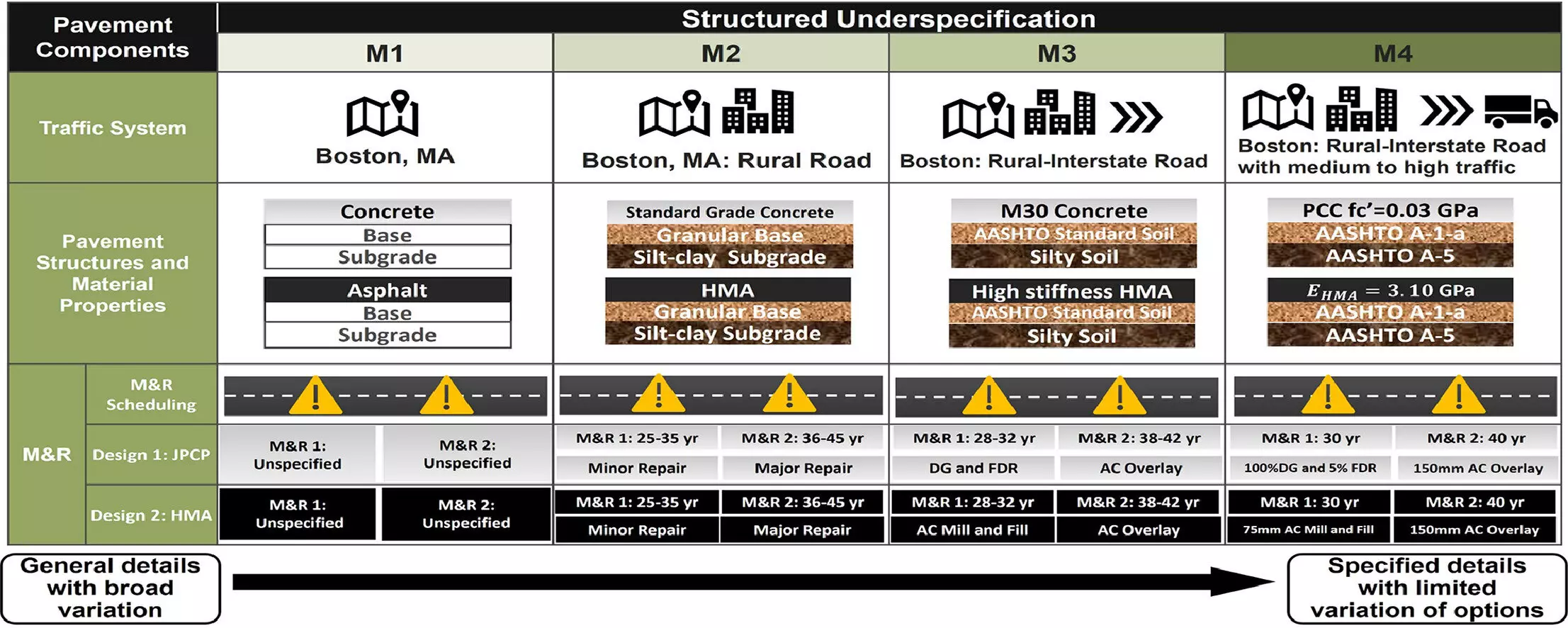Roads serve as the arteries of our civilization, connecting communities, facilitating commerce, and enabling mobility. In the United States alone, the extensive network encompasses approximately 2.8 million lane-miles, highlighting just how integral these infrastructures are to our daily lives. However, the environmental repercussions of maintaining such a vast network cannot be overlooked. The road system contributes over 75 megatons of greenhouse gas emissions annually, equivalent to a vehicle traveling around the Earth over 7.5 million times in a single year. It’s a sobering reality that evokes a need for urgent attention and innovative solutions.
Redefining Emission Reduction Strategies
While there is optimism in forecasting a 14% reduction in emissions by 2050 through advances in materials like cement clinker replacements, the research community posits that a remarkable 65% reduction may be feasible with focused investments in better materials and maintenance practices. This emphasizes the necessity of improving road surface smoothness and stiffness, which not only enhances driving efficiency but also curtails energy usage. For instance, if road surface roughness is improved by a mere 1%, we could potentially save 190 million tons of CO2 emissions each year in the U.S. alone. The importance of this aspect brings to light the role of innovation in paving the way for environmentally-conscious infrastructure that transcends the status quo.
Overcoming Data Challenges in Road Management
Despite the clear path towards emission reductions, a significant barrier remains: data scarcity. This void in data complicates efforts to carry out comprehensive life-cycle assessments (LCA) of roads, which would consider greenhouse gas emissions from the entire life span of pavement—from material extraction to decommissioning. The intricacies of calculating these emissions can prove too overwhelming and costly, which hinders informed decision-making in material selection and maintenance strategies.
In a rapidly evolving world, the unpredictability introduced by changing weather patterns and increasing traffic further complicates matters. To address these challenges, researchers have developed a streamlined framework for life-cycle assessment tailored for the complexities inherent in road management.
A New Approach to Life-Cycle Assessment
A recent study from the MIT Concrete Sustainability Hub introduces an innovative approach for conducting life-cycle assessments of pavements, emphasizing a balance between practicality and thoroughness. Recognizing the labor-intensive nature of LCA, the researchers suggest a structured framework that significantly reduces data collection requirements—by as much as 85%—without compromising the rigor of the findings. This method presents an exciting evolution in how we analyze the environmental impacts of pavement systems while empowering stakeholders like engineers and contractors to collaborate more effectively.
The unique framework divides the assessment process into various levels of data specificity, marking a scientific leap in understanding how fluctuations in data quality can shape emissions outputs. The ‘M’ levels range from M1, characterized by high uncertainty due to limited information, to M4, which signifies the highest accuracy derived from firsthand data. By offering insight into varying degrees of data specificity, the approach aims to improve not just environmental outcomes but also decision-making reliability.
Practical Applications and Future Developments
The study’s application in a case involving a Boston pavement project illustrates the framework’s capabilities. By analyzing two specific pavement types—an asphalt pavement and a jointed plain concrete pavement—researchers were able to ascertain emission outputs across different data levels. Handy results revealing that maintenance emissions contribute significantly to the overall carbon footprint stress the importance of continuous monitoring and adaptive management practices.
Currently, the MIT team is enhancing their assessment framework into an online tool that democratizes the process of life-cycle assessment for stakeholders at various levels. This innovation enables transportation departments and planning organizations to sift through heaps of data efficiently and to arrive at informed choices that prioritize sustainability, durability, and minimized environmental impact. This tool is projected to redefine how pavements are planned and constructed, ultimately leading toward greener roads.
The Path to Sustainable Road Infrastructure
Addressing the environmental challenges posed by road systems requires not just acknowledgment but decisive action. The novel insights presented by the MIT research establish a pathway toward meaningful change, advocating for an empowered stakeholder system that reframes our approach to road construction and maintenance. Through the marriage of cutting-edge research and practical tools, we stand on the precipice of a transformation that can lead us to a future where pavements serve both people and the planet more sustainably.


Leave a Reply